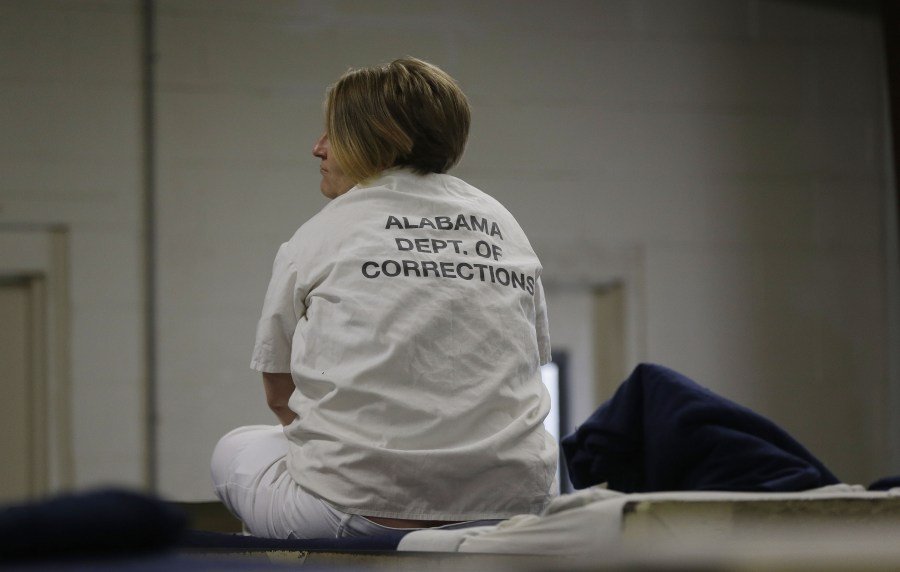
Although there are more men than women in prison, the growth rate of female imprisonment since 1980 has been twice that of men. Female incarceration in the U.S. has increased by more than 585 percent, and 62 percent of incarcerated women have a child under the age of 18.
Mental health is one of the largest differences between incarcerated men and women. As of 2017, 66 percent of women in prison reported a diagnosed history of mental health problems compared to only 35 percent of men.
A unique aspect of mental health in women’s prisons is family — specifically motherhood. According to Stephanie Taylor of Volunteers of Legal Service, “the separation of families and the unnecessary estrangement of mothers from their children is rarely discussed outside social worker and legal service provider circles working with this population.”
This poses an issue for incarcerated mothers, as the U.S. prison system is designed for men and is thus less responsive to women’s needs, let alone those of mothers.
Without adequate legal help, incarcerated mothers can permanently lose all rights to their children, sometimes within months of incarceration. Some additional problems leading to fractured mother-child communication include costly phone calls, physical distance and limited visits.
While some states are making efforts to improve prison facilities, a persistent difficulty is the actual design of women’s prisons, which were built with men in mind. Approximately 70 percent of the guards are men, and policies and the facilities themselves are generally designed to “control male social structures and male violence.”
In addition, “women were offered one volunteer-led 12-step class per week, while men had four. There wasn’t a low-security housing area for women, while there were four for the men. Women couldn’t be ‘trusties,’ meaning the inmates who served as porters and janitors and got extra privileges; men could.”
A blog post published in December 2015 by Penal Reform International highlights the unique risk factors associated with female offenders, including histories filled with abuse, neglect and violence.
“Such trauma histories are often linked to the substance abuse, chronic mental health conditions, and relationship difficulties that underlie criminal pathways for women,” according to authors Laura Maiello and Stephen Carter, who describe a typical women’s prison as a scaled-down version of a men’s institution, “minus the urinals and painted pink.”
According to a July 2024 publication of the Council on Criminal Justice, incarcerated women are more frequently punished than their male counterparts, “often for small infractions such as disrespect, disobedience and being disruptive.” They are also four times more likely than men to self-report sexual victimization by other inmates.
Even more alarming are the statistics related to sexual misconduct perpetrated by staff. A Council on Criminal Justice analysis “identified nearly 5,400 victims of sexual violence perpetrated by staff (46 percent) or other incarcerated people (54 percent).”
In incidents perpetrated by staff, “nearly 30 percent,” of victims were women; in incidents perpetrated by others who are incarcerated, 25 percent of victims are women. These figures are significant, as women make up just 10 percent of the incarcerated population.
Social justice researcher Danielle Rousseau documents the unique trajectory that often leads to imprisonment for women. She noted that “Unlike their male counterparts, many women enter the system not driven by the pursuit of power or financial gain but as a result of survival-related crimes — offenses rooted in abuse, extreme poverty and substance dependence.”
According to Rousseau, many such women are also primary caregivers for their children, further intensifying “the consequences of their incarceration.”
In an August 2021 resource guide, the Council of State Governments Justice Center recommended the adoption of a gender-responsive approach to women in the justice system.
It supports “gender-responsive and trauma-informed policies, practices and programs” that “recognize that women have distinct histories, pathways to offending and experiences in the criminal justice system.”
“These approaches address issues that may contribute to women’s involvement in the justice system, such as domestic violence, abuse and victimization, family and relationships, trauma and poverty, mental illnesses and substance use disorders,” it continues. An April 2023 brief from the Urban Institutemade similar observations
To support gender-responsive programming, the Council of State Governments Justice Center recommends engaging stakeholders, assessing existing policies, building collaboration and promoting narratives that reflect women’s experiences.
The surge in women’s incarceration underscores the urgent need for reforms to address their unique circumstances and challenges. By implementing gender-responsive programs and services, the criminal justice system can support these women more effectively, promote rehabilitation and reduce recidivism.
Elected representatives and policymakers can make a real difference in the lives of these women should they choose to roll up their sleeves and do the hard work.
Michelle Mikhels is editor-in-chief of the NYU Undergraduate Law Review.


